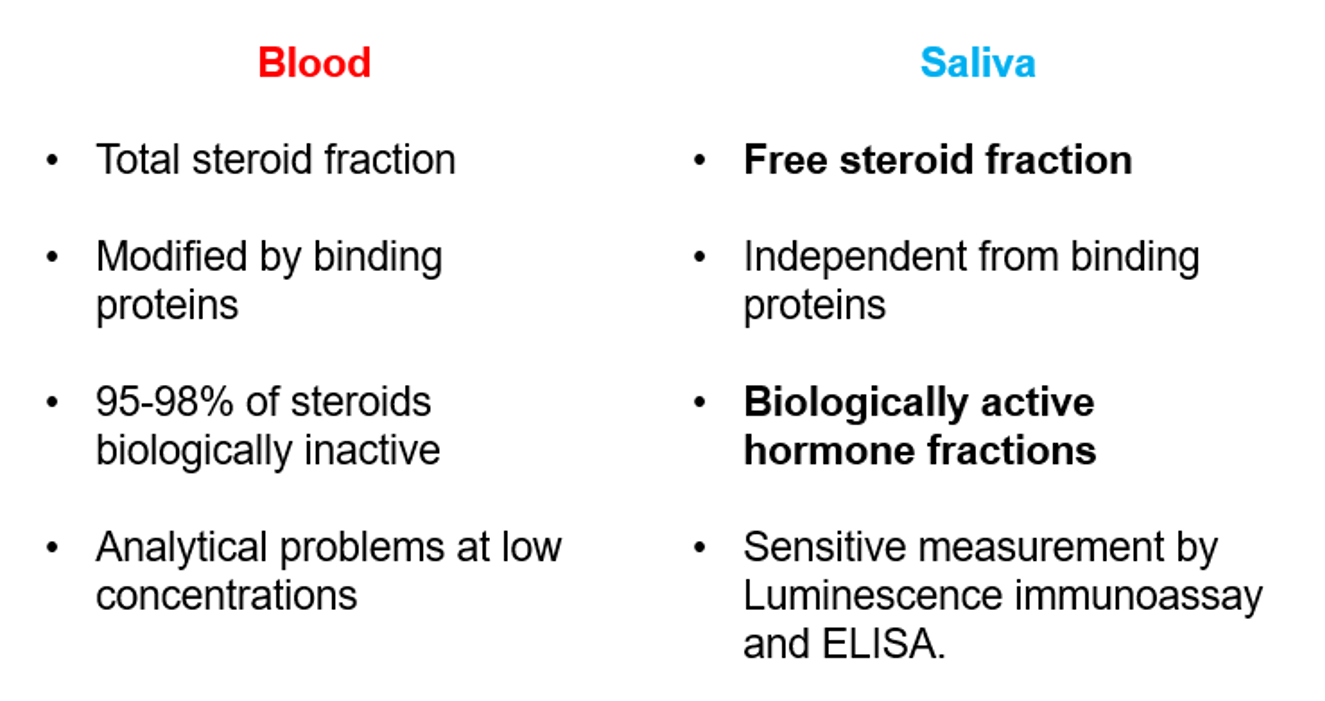The Case for Saliva Testing in the Management of Female Hormone Imbalance
Saliva tests are a simple and cost-effective alternative to blood tests
Female hormone levels have been measured using blood tests for decades. However, blood sampling is costly, invasive, and often logistically difficult. Consequently, there has been a shift toward tests based on more convenient and cost-efficient sample types, such as saliva. Saliva-based tests are a reliable and proven method for measuring female hormone levels, and highly accurate and painless. Here, I will address some of the challenges around saliva testing and its market acceptance.
Saliva testing workflow
Once the symptoms of a potential hormone imbalance have been identified, the physician will first want to measure the level of specific hormones. Typically, blood samples will be taken, and serum-based tests performed. However, in the search for less invasive and more cost-effective methods, saliva-based testing was born.
The uptake of saliva testing used to be hindered by variability in results due to the lack of standardization of sample collection, transport, and testing. These days, SOPs are in place for everything from the collection devices to the lab tests themselves.
The platforms for measuring and analyzing female hormone levels in saliva can be either enzyme immunoassay (EIA, e.g. ELISA) or mass spectrometry-based, e.g. LC-MS/MS.
Once samples have been analyzed and levels compared with normal ranges, a clinician can then prescribe treatment, such as hormone replacement therapy.
Can saliva testing give you the answers you need?
Yes. Saliva shows the bioavailable, unbound hormone level, which accurately represents the amount available to the body compared with serum levels (see table below). It is the bioavailable level that matters when considering treatment options.

Is it easy to do?
Yes. It is easy to self-collect with a standard device. The sample is then safely transported, stored, and subjected to rigorous, established SOPs in dedicated saliva testing labs.
Is it cost-efficient?
Yes. Saliva sampling is much cheaper than blood sampling, and the assays used for hormone measurement—particularly EIA-based assays—are economically viable.
Why isn’t everyone doing saliva testing?
The overall market acceptance of saliva testing in the clinical community is lower than that in the health and well-being arena. On the other hand, complementary (or well-being) practitioners are happy to perform saliva testing. However, they cannot prescribe, whereas physicians, who can prescribe, tend to use blood.
One reason for this is that a more holistic approach to health and well-being in the 21st century has seen a huge rise in complementary or alternative medicine. Consequently, thousands of self-administered or self-prescribed tests are now available online, some of which have little scientific foundation, raising skepticism in the clinical community.
Hence, for saliva-based testing to be accepted in the clinic, researchers who have empirical evidence that it works need to share their knowledge, and help a traditionally conservative audience that is happy to stay with tried and tested serum-based techniques to understand that saliva is a realistic and proven alternative.
In addition, most patients with internet access will first seek to understand their symptoms online before visiting their clinician, often pre-armed with tough internet-driven questions and expectations. Faced with this scenario, if a clinician has difficulty explaining the relative pros and cons of a specific technology that is not already accepted in the clinic, they are more likely to stick with existing SOPs—in this case, taking blood samples in preference to saliva.
Despite these barriers, we live in an uncertain world of ever-spiraling health care costs that expects us to develop more holistic and personalized treatments. Therefore, the market growth of such a simple and costeffective technique as saliva testing remains inevitable, with education at its core.


